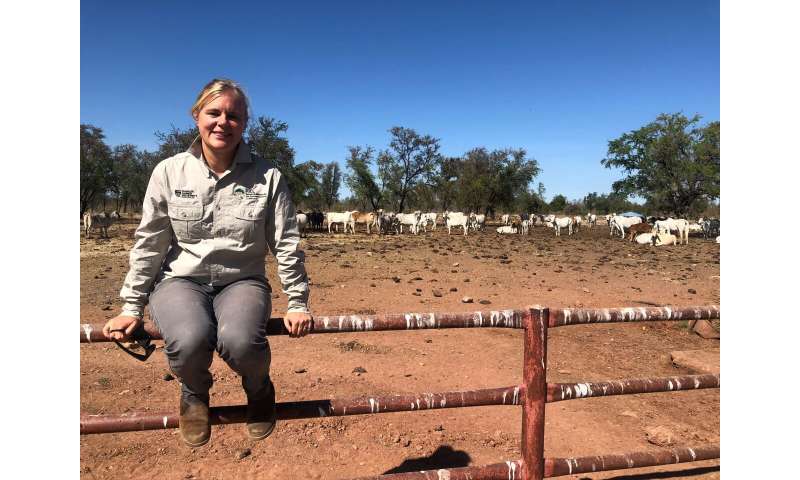
CDU researchers Beth Penrose (pictured) and Sunil Kadri are studying the impact of virtual fences on NT farms. Photo credit: Charles Darwin University
Cattle producers in northern Australia face unique challenges in adapting tools such as virtual fences to their properties, but new research from Charles Darwin University (CDU) aims to address the barriers to the technology.
Virtual fences map and control livestock such as cows remotely by equipping the animal with a GPS collar that sends audio cues and electrical pulses to the animal when it approaches a preset boundary.
CDU associate professor Beth Penrose said the technology would be invaluable to northern beef producers who manage millions of acres of land in fire- and flood-prone environments.
Associate Professor Penrose said virtual fences would not only increase farmers' productivity but would also benefit the environment.
“One of the main landscapes we want to protect is riparian areas – areas around water,” she said.
“During the rainy season, the watercourses often flood and then retreat. So if you wanted to fence the watercourse with a normal fence, it would be washed away and you would have to replace it, which costs a lot of time and money.”
“Permanent fencing of watercourses could result in riparian areas forming fire corridors, whereas virtual fences allow native herbivores such as kangaroos to continue to eat vegetation to keep fuel loads down.”
Southern states, where calves are separated from cows earlier, rely heavily on virtual fencing, while northern beef producers typically use cow-calf systems that keep the pair together for much longer.
CDU Professor Sunil Kadri said the collars used in virtual fencing technology were not suitable for calves, posing a unique challenge for farmers in the territories.
“We don't know whether calves will respect the virtual fence, whether mothers will ignore the fence when their calves are on the other side of it, and what impact this has on welfare and behavior,” Professor Kadri said.
“It is important that we develop an understanding of the impact of the use of virtual fencing in northern rangelands on the behavior and welfare of calves and cows, as well as the potential for using the technology in a range of applications in this environment.”
Provided by Charles Darwin University
Quote: Pushing boundaries: New research evaluates virtual fences for use on NT cattle farms (2025, November 19), retrieved November 20, 2025 from https://sciencex.com/wire-news/524987973/moo-ving-the-boundaries-new-research-evaluates-virtual-fences-fo.html
This document is subject to copyright. Except for fair trade purposes for private study or research, no part may be reproduced without written permission. The content is for informational purposes only.